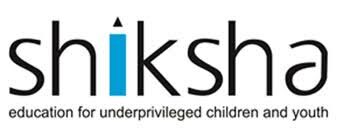Understanding The Key Differences Between ESL And EFL: Helpful Guide

In the TEFL industry, every teacher might have heard the common terms- ESL and EFL, which is often used as interchangeably. However, both represent different types of English language learning.
ESL stands for English as a Second Language, which refers to those learners who use English as a second language for writing, speaking, and communicating.
On the other hand, EFL as English as a Foreign Language refers to learners who belong to non-native English-speaking countries, who learn English to write, speak, and communicate.
Now, you might be thinking, that the ultimate aim is to help non-native speakers of English, whether it’s ESL students or EFL teachers. You are partially right, but both learners have different learning requirements, which you need to understand before teaching them.
If you are feeling a little bit confused, then don’t worry, we have got you covered.
In this blog post, we will be exploring the difference between ESL and EFL in detail, which gives you the clarity to understand the different learning needs of both ESL and EFL students and how you can help them in their language-learning journey.
What Does ESL and EFL Mean?
ESL (English as a Second Language) and EFL (English as a Foreign Language) generally describe the purpose and status for teaching and learning English in different contexts.
ESL refers to teaching and learning in native English-speaking countries or countries where English language usage is very dominant like- the USA, UK, New Zealand, etc.
In an ESL classroom, you can expect to find students either immigrants or visitors. This means an ESL classroom will be full of mixed nationalities students and they rarely share their native language or culture. Additionally, ESL students also get plenty of exposure to English-speaking culture outside the classroom, which helps them to learn the language faster.
On the other hand, EFL refers to teaching or learning in non-native English-speaking countries like- China, Brazil, Japan, etc. where the official or dominant language is not English. EFL learners have a very limited English-speaking culture. EFL learner’s primary goal for learning English is to enhance their career and professionally.
What is the Difference Between ESL and EFL?
Let’s get to the major difference between ESL and EFL in detail:
- ESL learners usually learn the English language for purposes like- social, cultural, and identity. Whereas, EFL learners usually learn English for academic, professional, or personal purposes.
- ESL learners have more exposure to the English language in society compared to EFL learners, which improves listening and speaking skills significantly. However, they face difficulty in improving their reading and writing skills.
On the other hand, for EFL students to develop writing and reading skills is much easier compared to speaking and listening skills.
- ESL students come from similar linguistic and cultural backgrounds and have good levels of English language proficiency.
Whereas, EFL students come from diverse linguistic and cultural backgrounds and they don’t have up to the mark English language proficiency.
- ESL teachers have less autonomy and control over the curriculum, learning material, and lesson plans compared to EFL teachers. This means ESL teachers have more regulations to follow in their teachings.
Whereas, EFL teachers have more control and autonomy over the curriculum, learning material, and lesson plans compared to ESL teachers. This means it will give more freedom and flexibility to use creativity in their teaching methods.
- The teaching environment in the ESL classroom can be informal and dynamic compared to the EFL classroom environment. This means teachers can introduce more authentic and contextualized classroom activities and tasks.
Whereas, the teaching environment of an EFL classroom is more structured and organized compared to an ESL classroom environment. It also has standardized assessments and tests.
Better Understanding of ESL & EFL Can Help You Succeed
ESL and EFL are being used interchangeably in the TEFL industry. However, both represent different types of English language learning. Get a better understanding by going through the above-mentioned differences between ESL and EFL classrooms, which will help you gain more clarity.
If you still thinking about how to begin your TEFL teaching journey, then consider pursuing courses like 120 Hours TEFL Course Online, where you will get assistance from a top expert trainer, who will help you stand out in the TEFL teaching industry.




